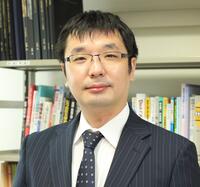-
安全文化診断結果に基づく安全文化醸成要因の因果モデル構築と海外拠点比較
瀧島 昴, 東瀬 朗
第57回安全工学研究発表会
2024.12
-
Development of Safety Culture Survey for High-Risk Industries in Japan and Asia: Lessons from 15-Year Practices
International conference
Akira Tose
Asia Pacific Symposium on Safety 2023
2023.10
Department of Chemical Engineering at King Mongkut's University of Technology Thonburi (KMUTT)
-
Comparison of Causal Model of Factors Fostering Safety Culture in Japan and Thailand Based on the Results of Safety Culture Assessment
International conference
Daichi Nunokawa, Hiroaki Honma, Yuichi Kitani, Shinichi Harada, Misao Okada, Yoshihiro Nakagawa, Hiroko Fukuo, Tomoya Isimaru, Akira Tose
Asia Pacific Symposium on Safety 2023
2023.10
Department of Chemical Engineering at King Mongkut's University of Technology Thonburi (KMUTT)
-
Study for Structuring Causal Model of Safety Culture Based on Safety Culture Survey Result of Japanese Company
International conference
Hiroaki Honma, Daichi Nunokawa, Yuichi Kitani, Shinichi Harada, Misao Okada, Yoshihiro Nakagawa, Hiroko Fukuo, Tomoya Ishimaru, Akira Tose
Asia Pacific Symposium on Safety 2023
2023.10
Department of Chemical Engineering at King Mongkut's University of Technology Thonburi (KMUTT)
-
Study of the Influence of Human and Organizational Factors on Safety and Quality Management
International conference
Takeru Hirata, Keiko Ohashi, Takuo Osuka, Akira Tose
Asia Pacific Symposium on Safety 2023
2023.10
Department of Chemical Engineering at King Mongkut's University of Technology Thonburi (KMUTT)
-
Results of Safety Culture Survey and Introduction of Measures to Improve Safety Awareness
Shoichi Owashi, Osamu Osawa, Mitsuru Furuya, Wataru Nojiri, Akira Tose
2023.6
-
Study on the Relationship between Safety Culture and Quality Compliance Awareness based on Safety Culture Assessment Techniques
Aratama, Hiroshi, Ohashi, Keiko, Hasegawa, Kazuhisa, Fukuo, HIroko, Tose, Akira
2022.12
-
Extraction of Factors Fostering Safety Culture and Proposal of Causal Model Based on Safety Culture Assessment Results by Department
Takahashi, Shogo, Kitani, Yuichi, Harada, Shinichi, Okada, Misao, Tose, Akira
2022.12
-
Research on differences in awareness of rule compliance in plant
Taisei YOKOTA, Misao OKADA, Hiroyuki TANAKA, Kiyoshi TANAKA, Tomoya ISHIMARU, Hiroko FUKUO, Akira TOSE
2022.12
-
Prospects of Regional Revitalization Through Cooperative Education at Universities of Science and Technology Collaborating with SMEs in the Region
KOURAKATA Itaru, NONAKA Satoshi, ODA Masafumi, WAKABAYASHI Etsuko, NAGAO Masanobu, TOSE Akira
The Proceedings of the Tecnology and Society Conference
2019
The Japan Society of Mechanical Engineers
-
Improving Industrial Safety on Chemical Industries using Safety Competency (Hoan-ryoku) Assessment
東瀬 朗, 若倉 正英
アロマティックス
2013.4
日本芳香族工業会
-
A VALIDATION REGARDING EFFECTIVENESS OF SCENARIO GRAPH
Hiroyuki Yagita, Akira Tose, Madoka Nakajima, Sun K. Kim, Takashi Maeno
PROCEEDINGS OF THE ASME INTERNATIONAL DESIGN ENGINEERING TECHNICAL CONFERENCES AND COMPUTERS AND INFORMATION IN ENGINEERING CONFERENCE, 2011, VOL 9
2012
AMER SOC MECHANICAL ENGINEERS



